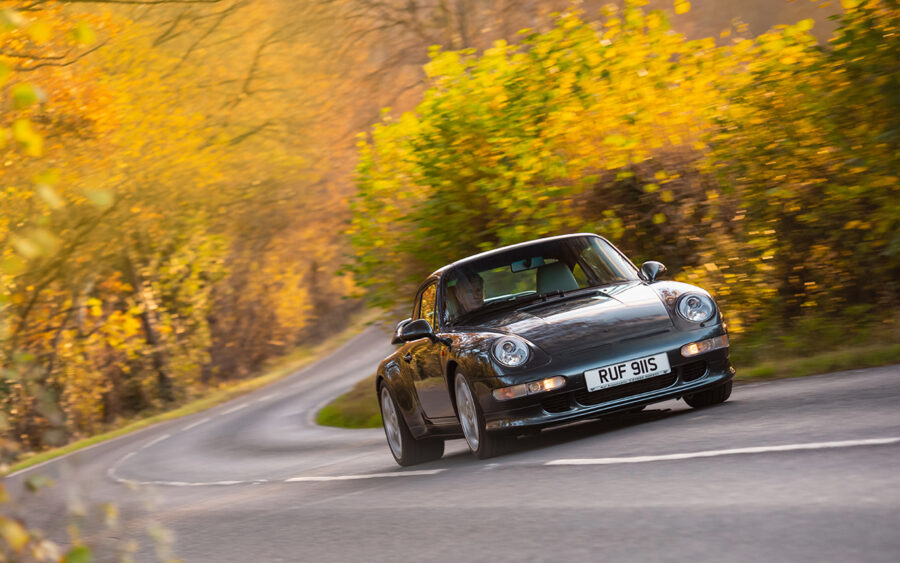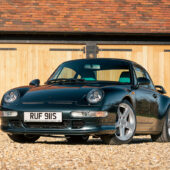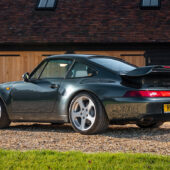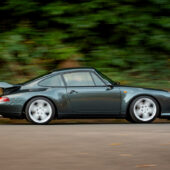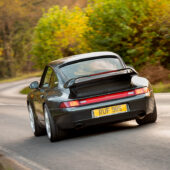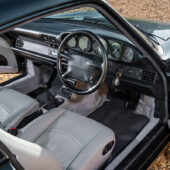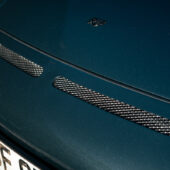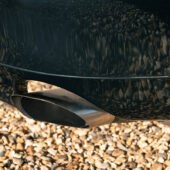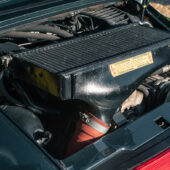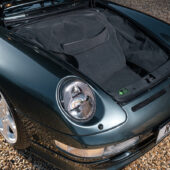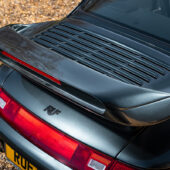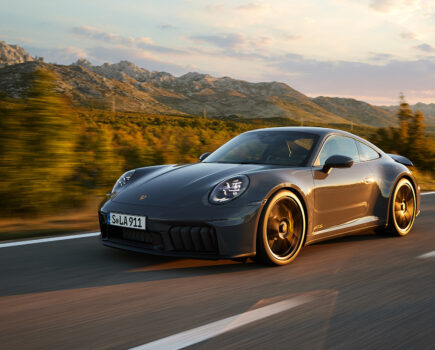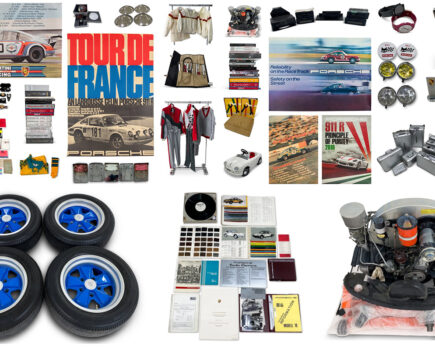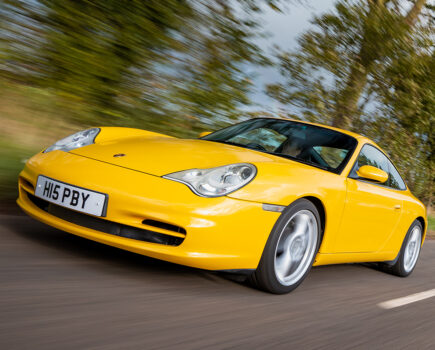The RUF BTR was the first car to leave Pfaffenhausen as a model in its own right, and a model that survived through three generations of its Porsche 911 base
Words: Johnny Tipler Images: Dan Sherwood
Based in Pfaffenhausen, three hours east of Stuttgart and an hour north of Munich, RUF Automobile is the world’s leading Porsche tuner. Its an accolade that’s bolstered by the firm’s status as a registered German manufacturer and an official Porsche agent – and the simple fact the famous Stuttgart brand closely observes what Alois Jr and his team are doing to extract wild power from Porsche engines.
RUF’s speciality is deconstructing brand-new Porsches, before reconstructing them to individual customers requirements, incorporating RUF’s own heady blend of built-in roll cages, reupholstered cabins and massively tuned running gear. In 1981, the official German sanctioning body, the TÜV, granted RUF Automobile GmbH manufacturing status, and the first car to bear an actual RUF chassis number was the turbocharged 3.4-litre RUF BTR (the letters shorthand for Gruppe B Turbo RUF), hand-built in 1983, delivering 374bhp and available in wide 911 Turbo (930) or narrow Carrera 3.2 bodywork.
The BTR was based on the 930, RUF taking the 3.3-litre turbocharged flat-six and upping the bores to 3.4-litres, employing larger pistons, bigger turbochargers and matching intercoolers to ramp up power to 375bhp. The ventilated cross-drilled brakes were increased in size and benefited from four-piston calipers, the suspension was stiffened, the ride height lowered and the exhaust system revised. All modifications were dependent on the customer’s specification, but within reason, anything was possible. Inevitably, these upgrades utilised lighter, stronger, and way more expensive materials than fitted on a standard 930.
In 1988, five years into RUF BTR production, the model joined the then new RUF CTR (nicknamed ‘Yellowbird’ and arguably the brand’s best-known product) in becoming available with a bespoke RUF six-speed transmission. The exterior of many BTRs were given the RUF treatment, consisting of a body kit developed and refined on RUF’s previous Porsche models, along with characteristic seventeen-inch single-piece Speedline forged alloy wheels. The bodywork featured deeper bumper panels and valences front and rear, with a big oil cooler behind the front airdam. Fuller side-skirts also featured.
RUF founder Alois Ruf Jr always preferred the narrow body configuration because of its aerodynamic benefits — drag coefficient was appreciably lower than the broad-beamed Turbo body, amounting to more than 12.5mph difference in top speed. The RUF BTR’s bodywork could be finished in any colour specified by the customer, finished off with the tea-tray rear wing.
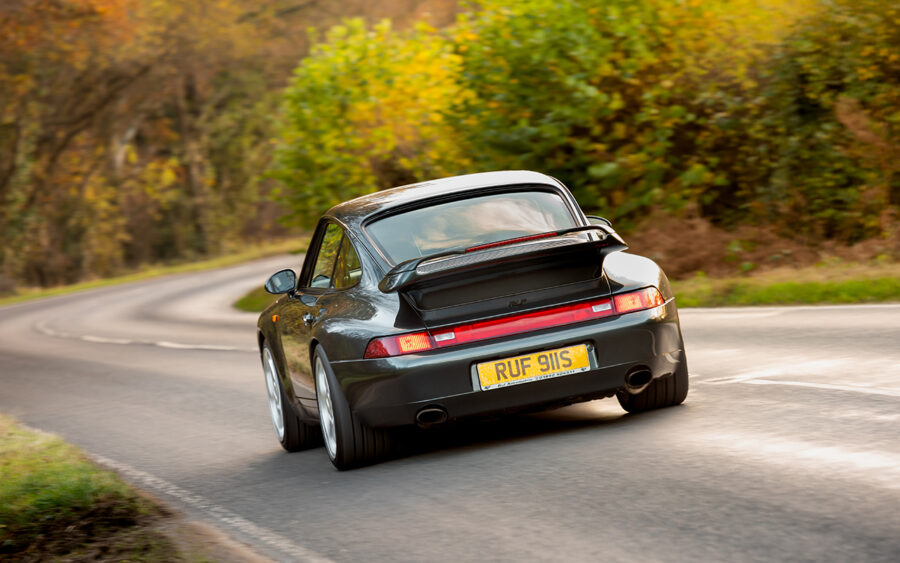
True to form, the modifications were not limited to the external shell. In the cabin, RUF monogrammed seats, luxury carpets and an equally plush dash were installed if Comfort specification was optioned, though a lightweight BTR was also available to buyers. The exact number of RUF BTRs produced isn’t known, a result of factory records being lost for both RUF VIN numbers and converted Porsche-stamped 911 chassis, but it’s thought twenty-odd units were hand-crafted from the ground up on blank chassis, with a further hundred or so assembled from donor 911s supplied by RUF customers.
In 1993, RUF moved to Porsche’s 964-generation 911 as its basis for the BTR. Named the RUF BTR 3.8, the new car was based on the Carrera 2 model. Its engine was bored out to 3.8 litres, a turbocharger added and a six-speed automatic used. Other modifications included 18-inch wheels and the usual reworked chassis and suspension. Power was upped to 409hp, enough for a near-200mph top speed and 0-60mph in 3.6 seconds.
The company’s model designations can be confusing. The RUF BTR2 was one of three RUF models created on the 993 platform, the others being the CTR2 and the Turbo R. The 993 Turbo itself was released in April 1995, twelve months after 964 Turbo production ended, and remained in production until July 1998, two years after the inception of water-cooled 911s. The overlap is quite interesting, but a straddled changeover is typical of Porsche. The 993 body shape was the fruit of Porsche’s virile in-house Zuffenhausen styling department, overseen by Harm Lagaaij and rendered by Tony Hatter and Richard Soderberg. The Turbo was mostly available as a coupé, though a further fourteen examples were configured as Cabriolets at the factory in 1995, albeit with a single turbocharger and rear-wheel drive.
Shortly after the introduction of the 993 Carrera in 1994, RUF introduced the 993-based BTR2, complete with a 3.6-litre turbocharged engine, fixed rear spoiler plus a distinctive RUF-designed front bumper, which included two extra air inlets. Based on the Carrera engine, the air-cooled, K27-turbocharged RUF powerplant generated 414bhp at only 5,000rpm and maximum torque of 435lb-ft was available at 4,800rpm. The BTR2 took on the mantle of the original BTR (in production until 1989), though only eighteen BTR2s were built at the Pfaffenhausen plant, with only three produced in right-hand drive form.
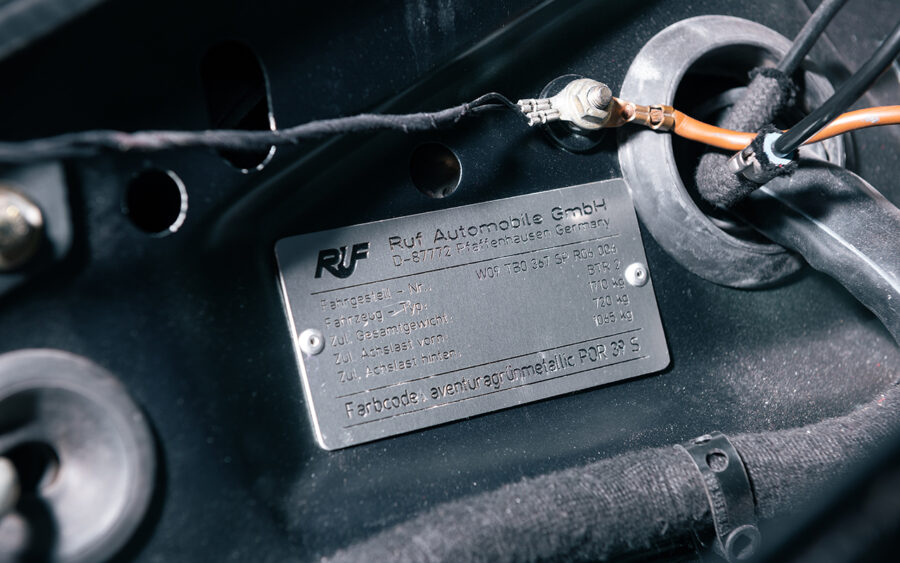
RUF BTR timeline
1981
German automotive body TÜV grants RUF Automobile GmbH manufacturer status
RUF BTR 3.4 arrives as first official RUF model, based on the Porsche 930 Turbo
1988
BTR made available with bespoke RUF six-speed transmission – the same unit used in the famous RUF CTR ‘Yellowbird’
1993
RUF BTR 3.8 introduced, based on the Porsche 964 Carrera 2
1994
RUF BTR2 introduced based on Porsche 911 (993) Carrera 2
1995
Porsche 911 (993) Turbo launched

